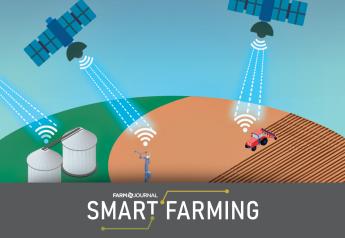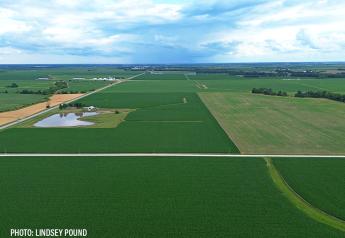Two key factors control P movement from soil to groundwater

New insights into how phosphorus leaches into groundwater could help reduce its potential impact on water and the environment, a UF/IFAS scientist says.
Phosphorus poses an environmental threat when it travels from soils to open water bodies, including lakes, streams and rivers. When too much phosphorus is applied to soils, the ground cannot hold all of the chemical, said Gurpal Toor, an associate professor of soil and water science at the UF/IFAS Gulf Coast Research and Education Center in Balm, Florida. As a result, phosphorus leaches out and migrates to water bodies, lowering water quality and leading to algal blooms. Such blooms can choke off oxygen to fish and underwater plants.
In a newly published study in the Vadoze Zone Journal, Toor examined phosphorus that percolated into soils in Maryland and Delaware. He conducted the study with his former mentor, Tom Sims, a retired associate dean and professor at the University of Delaware.
For several decades, animal manure has flowed into soils in Delaware and Maryland. Areas around Lake Okeechobee, in Florida, mirror the agricultural soils of southern Delaware and Maryland, Toor said. So the findings apply to many places.
In the study, Toor and Sims characterized the effect of soil properties and saturation on phosphorus leaching from three soil series in Delaware and Maryland. Researchers collected 18 soil columns using a tractor-mounted device from three soils that varied in their drainage characteristics. Some drained well; others drained moderately and others drained poorly.
Researchers identified soils with variable phosphorus concentrations and determined their phosphorus saturation ratio, which is the amount of phosphorus in the soil versus the amount that soils can hold. They found that scientists and regulators should use the phosphorus saturation ratio and their knowledge of water flow paths in soils to predict how much phosphorus may leach from soils.
"Anyone who is concerned about how much phosphorus they have in the soils can quickly find out through a soil test," said Toor. "This would not only protect the environment but will also reduce the need to apply excess fertilizer to grow crops."
They also concluded that two factors determine the potential dangers of phosphorus leaching into groundwater: how much of the nutrient is already in the soil and the paths available for it to wind up there, Toor said.
The details of the study can be found here: Toor, G.S., & J.T. Sims. 2015. Managing phosphorus leaching in mid-Atlantic soils: importance of legacy sources. Vadose Zone Journal. 14: http://dx.doi.org/doi:10.2136/vzj2015.08.0108.







